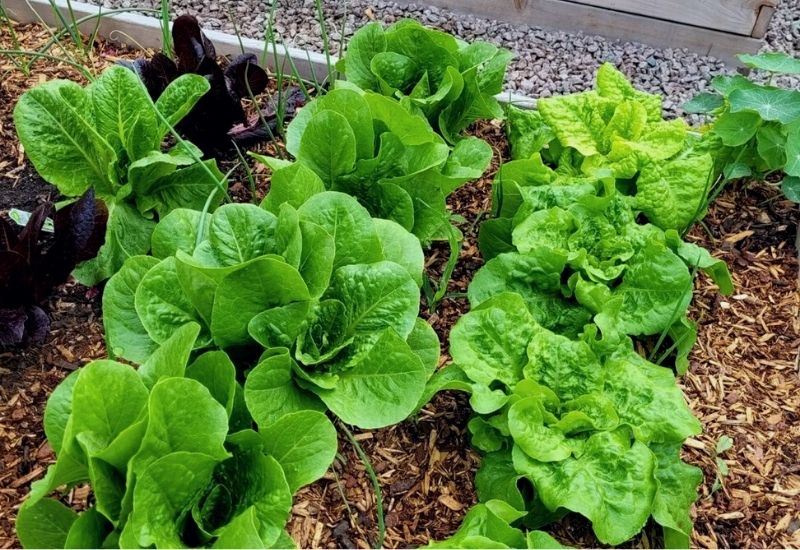
Romaine is an oft-unappreciated vegetable, relegated to boring-and-bland status in the kitchen. In truth, romaine can be a crisp, delicious backdrop supporting other flavors, as well as a versatile green that stands on its own: for example, have you ever tried grilled romaine (spoiler alert, it’s amazing!).
Like any green, romaine is at its best when picked fresh from the garden. Grocery store romaine can be as much as two weeks old, far past peak flavor, nutrition, and crispness.
Fortunately, growing romaine lettuce is an easy, no-fuss veggie to add to your garden, and it can even be grown in containers. In this seed to harvest guide we will go over everything you need to know to enjoy homegrown romaine.
Why Grow Romaine?
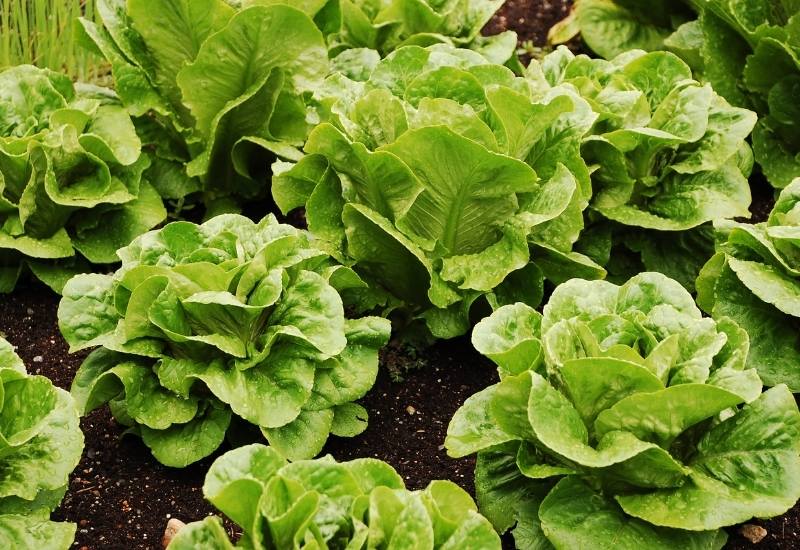
Flavor and freshness are great reasons to add a few romaine heads to your garden, but certainly not the only ones.
In recent years, romaine has been linked with a number of E. coli outbreaks, leading many gardeners to prefer growing their own for safety reasons.
In addition, romaine, with it’s thick midribs and crunchy leaves, is the lettuce variety most resistant to snails and slugs, which prefer more tender greens.
Romaine is also more upright and compact than other varieties, allowing you to grow more plants per square foot.
Because of its growth habit, romaine stays far cleaner than other lettuces, and is ready for the salad bowl with just a quick rinse.
By growing your own, you’ll also be able to try more varieties than are available at the store, including some unique heirloom types.
Since romaine is generally more cold tolerant and bolt resistant than other lettuces, you can plant it earlier and grow it later, extending your fresh greens season.
There are a few types of romaine we’ll discuss that are particularly suited to hot and cold weather and can extend your season even more.
Varieties of Romaine Lettuce
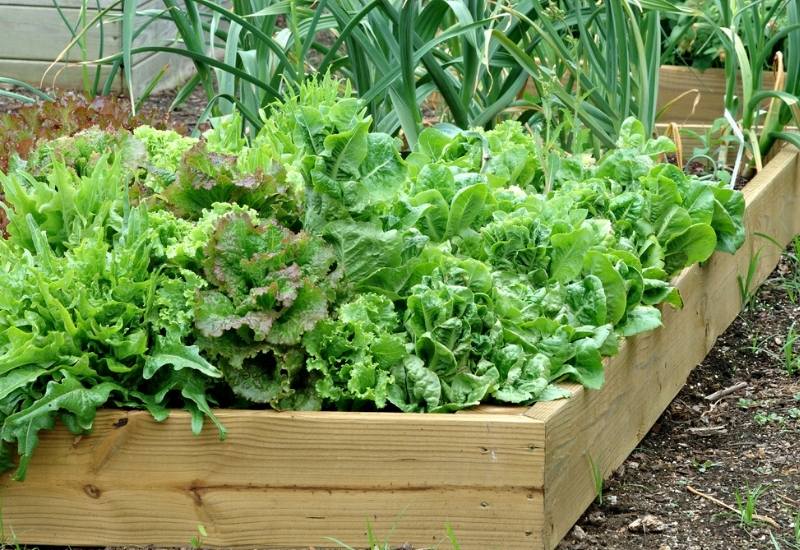
Before planting, you’ll need to choose a variety of romaine. If you are purchasing starts, you may be limited to just one or two kinds available at your local garden center.
If there is a farmers market near you, it will likely offer a greater range of starts to choose from. Starting with your own seeds will allow you to try some new or unusual varieties.
Romaine comes in a wide range of colors, with different degrees of cold and heat resistance. Some interesting romaine varieties you may want to try:
How to Plant Romaine
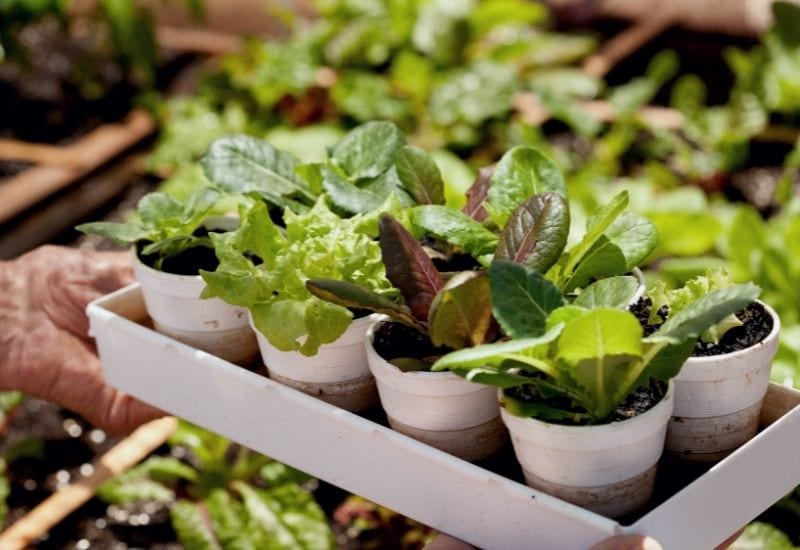
In areas that have hot summers and cold winters, romaine is typically planted in the early spring and late summer, for two crops per year.
The fall crop of romaine lettuce can be direct seeded 6-8 weeks before your first fall frost. Guidelines for spring planting times are outlined below.
Since romaine lettuce is a cool weather crop, if you live in a hot climate it’s best to plant romaine in the winter.
Purchasing Starts
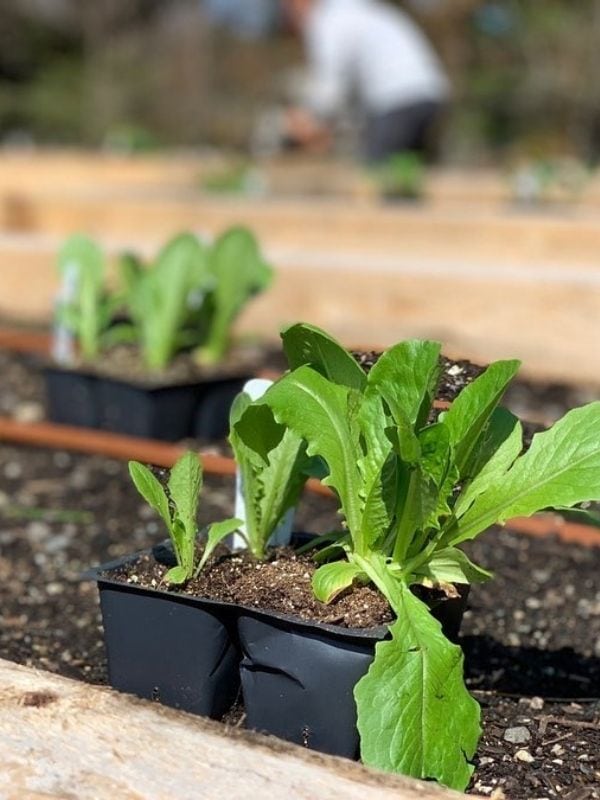
Buying starts is easier than starting romaine from seed, especially if you are a beginning gardener.
The main downside is that this limits the varieties you can choose from, and is slightly more expensive. For many gardeners, the convenience is worth it.
Start From Romaine Seed Indoors
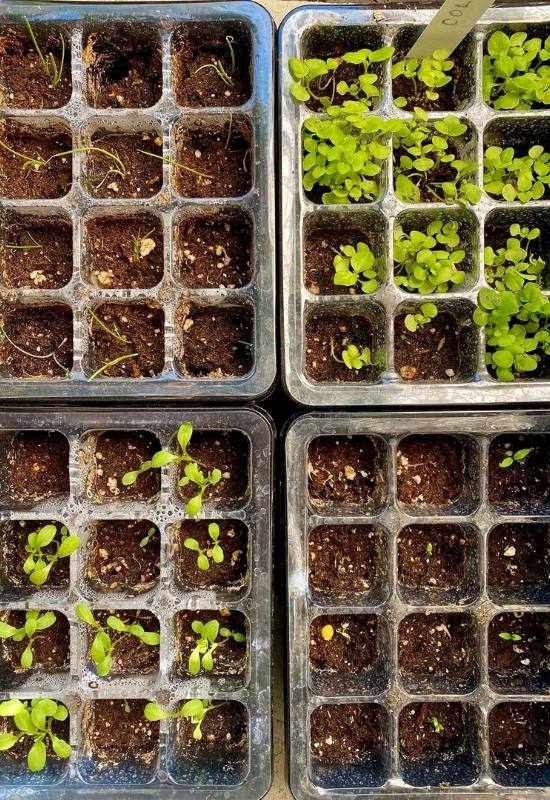
You can also start your own romaine lettuce seeds indoors, which will allow you to select from a wide range of romaine varieties and get a head start on the growing season.
To grow romaine lettuce from seed indoors:
Tips for Transplanting Romaine
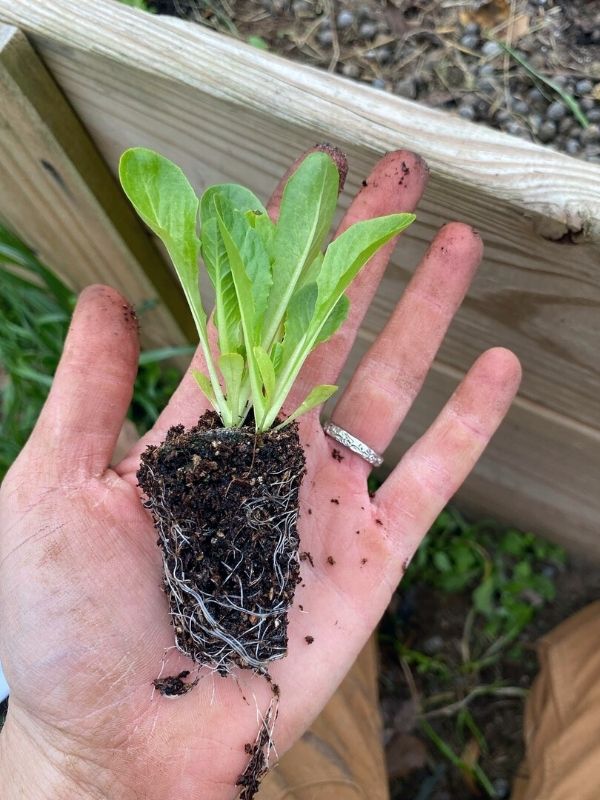
Since romaine seedlings can withstand frost, they can be planted in the garden as soon as the soil can be worked.
Lettuces are less likely to experience transplant shock than other veggies, but to reduce stress during the transplanting process, follow these tips:
sowing romaine lettuce seeds directly into the garden
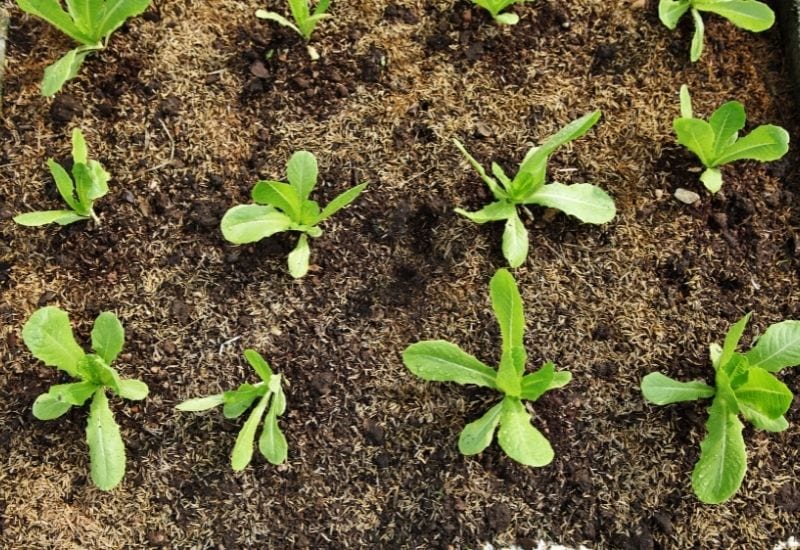
This option is far less work, and will still allow you to select your own seeds. Romaine seeds are hardy, and unlikely to rot even in cold, wet ground, so they can be sown as soon as the ground can be worked.
To direct sow romaine:
Planting Romaine in Containers
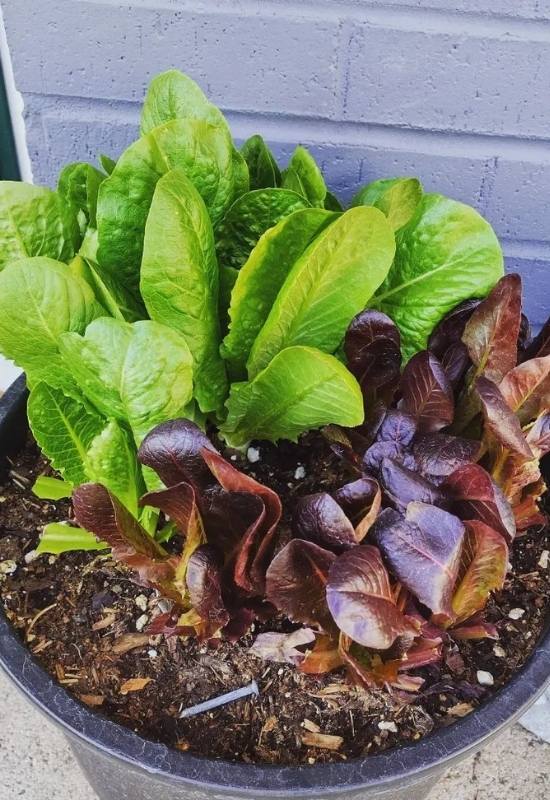
Romaine does well as a container planting. If growing romaine in a pot, make sure to give each plant at least two gallons of soil. Use a high quality potting mix amended with compost.
When planting romaine in containers, make sure to maintain a plant spacing of 8-10” between plants.
If transplanting starts, just place romaine seedlings 8-10” apart in containers. When directly sowing seeds in a container, plant seeds 1 inch apart and thin after germination.
How to Care for Romaine Plants
1: Fertilize Regularly
Romaine does best with regular applications of fertilizer. Before planting, amend the top three inches of soil with compost.
Never use fresh manure as a fertilizer when growing greens (or any other vegetable, for that matter).
After the initial application of compost, use a balanced organic liquid fertilizer every two weeks (such as a 10-10-10).
2: Water Often
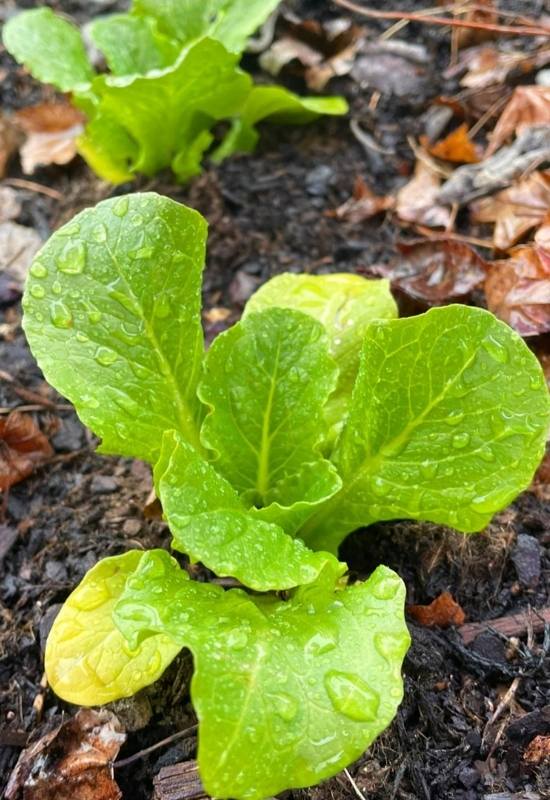
Romaine and other lettuces have shallow root systems. Without the ability to access deeper sources of water, romaine requires light and frequent waterings, with a total of one inch per week of irrigation, to encourage good growth.
Keep soil moist, and mulch to retain moisture, but be careful not to overwater as this can lead to root and foliar diseases. Overhead watering should always be done in the morning to prevent foliar disease.
3: Extend the season
You can lengthen the spring growing period by shielding your plants with a shade cloth when the weather gets hot.
In the fall, you extend the season by keeping your plants warm with floating row cover or cold frames.
How to Harvest Romaine Lettuce
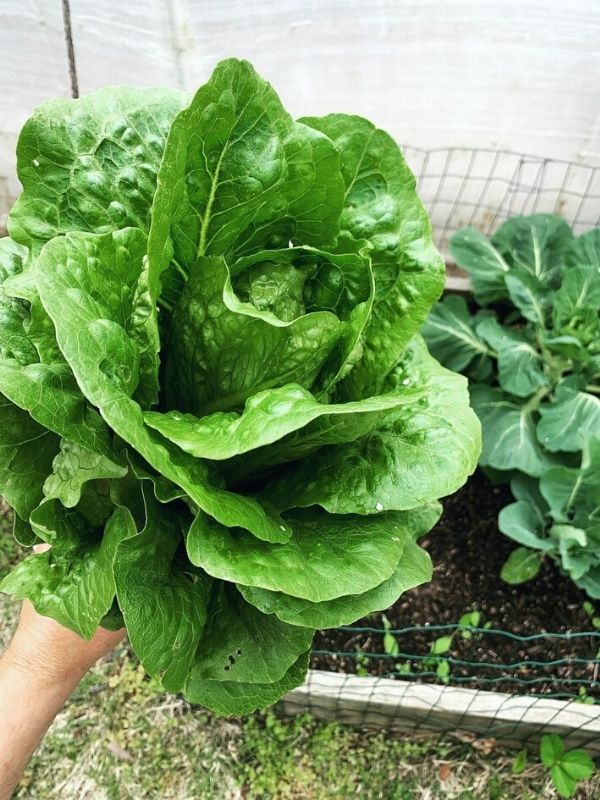
When grown from seeds romaine takes, on average, 70-75 days to mature. Romaine heads are ready to harvest when they are about 4” wide and 6-8” tall.
Romaine can be harvested as mature heads, or as baby greens. If you’d like to pick baby greens, wait until your plants are at least one month old.
Pick greens while leaving the growth point intact in order to enjoy multiple harvests. For full sized heads, cut the plant away at the base.
For spring crops of romaine lettuce, harvest before the full heat of summer hits, as heat will turn the leaves bitter.
Make sure to harvest or protect romaine plants when the weather cools in fall, as mature plants are not frost resistant like seedlings.
Dealing with Romaine Pests
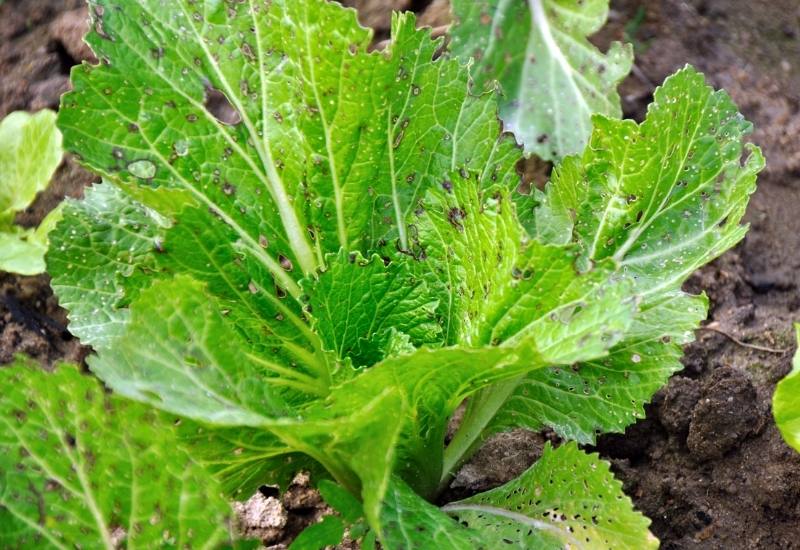
The two most common romaine pests are slugs and snails, aphids, and rabbits.
To combat slugs and snails:
To deal with aphids:
To ward off rabbits:
Preventing Romaine Diseases
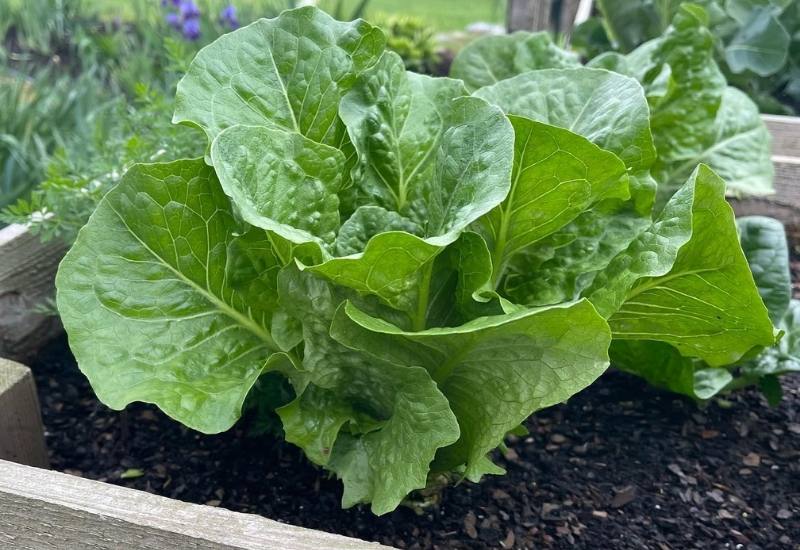
All lettuces, including romaine, are vulnerable to a range of bacterial and fungal diseases such as Downy Mildew, Schlerotina, Corky Root, and Bacterial Leaf Spot.
Good growing practices are the best way to prevent these diseases from taking hold in your garden:
Final Thoughts
There’s nothing like making a salad with fresh romaine harvested the same day.
With proper care and maintenance, you’ll be able to enjoy two delicious romaine harvests each growing season.

Written By
Amber Noyes
Amber Noyes was born and raised in a suburban California town, San Mateo. She holds a master’s degree in horticulture from the University of California as well as a BS in Biology from the University of San Francisco. With experience working on an organic farm, water conservation research, farmers’ markets, and plant nursery, she understands what makes plants thrive and how we can better understand the connection between microclimate and plant health. When she’s not on the land, Amber loves informing people of new ideas/things related to gardening, especially organic gardening, houseplants, and growing plants in a small space.
